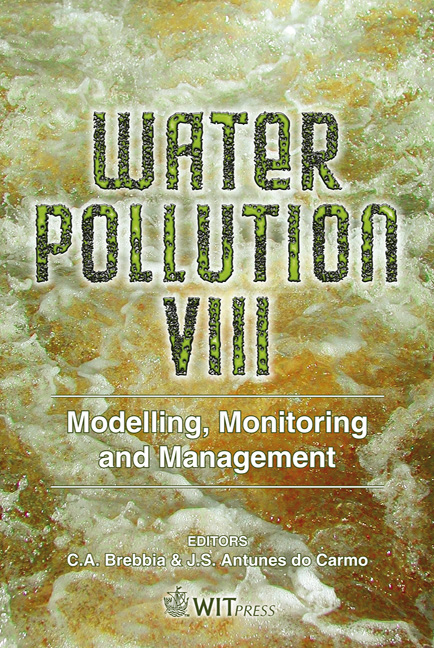Using Fluorescence For A Full Spectral Analysis Of Dissolved And Gaseous Oxygen Within A Sand Bed
Price
Free (open access)
Transaction
Volume
95
Pages
10
Published
2006
Size
477 kb
Paper DOI
10.2495/WP060371
Copyright
WIT Press
Author(s)
A. Wanko, N. Forquet, R. Mose & A.-G. Sadowski
Abstract
The mechanisms of gas transfer within a sand bed continuously and discontinuously fed were studied. Use of fluorescence technology allows us to detect both gaseous and dissolved oxygen. Magnitudes of convection and diffusion phenomena and their relative contributions to oxygen renewal of the porous medium were determined. In a continuous clear water supply, we measured gaseous oxygen concentrations of approximately 21% on the surface and 10% in-depth. These measurements are in agreement with literature values. Oxygen transfer from the gaseous phase towards the liquid phase was observed to occur entirely during the feeding phase. Thus, convection seems to be the prevalent phenomenon. In a continuous deoxygenised water supply, the gist of the gas/liquid transfer in-depth is due to the expelled air from the higher pores, which is present in the bed before feeding. The diffusion, which is an extremely slow phenomenon, aims at a homogenisation of the oxygen content in the higher part of the sand bed. In intermittent feeding, the air suction which occurs immediately after the total water infiltration is important for the oxygen renewal in the higher centimetres of the porous medium but remains insufficient to 13 cm depth. The oxygen transfer rates were calculated for different hydraulic load. They are all the more significant as the volumes injected by the batches were it. However, we observed that diffusion does not allow fresh air to reach deeper levels. Keywords: convection, diffusion, oxygen, transfer, porous medium, infiltration, sanitation, sand bed.
Keywords
convection, diffusion, oxygen, transfer, porous medium, infiltration, sanitation, sand bed.





